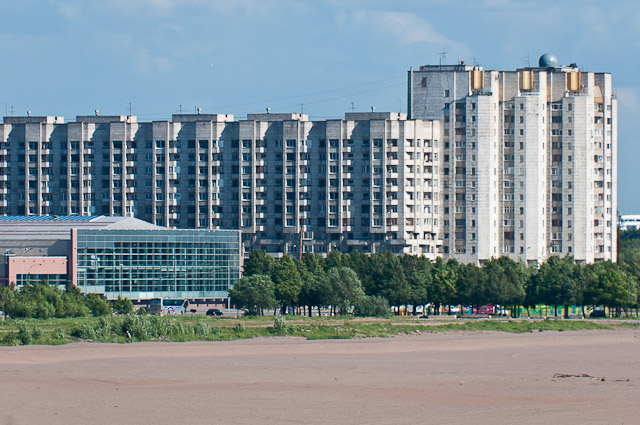June 17, 2012
I can picture Peter the Great saying to his planners and builders something like, “I want my new city like Amsterdam, only bigger.” Maybe he really did say that. Peter built his city on the swampy estuary of the Neva River; his intent was to create a European style city and a major seaport. Due to the swampy nature of the land, Peter and his builders put in a network of canals both to help drain the land and also to provide for inner-city transportation. It was 1703 after all. Where the canals still exist, St Petersburg does have an Amsterdam look, but the buildings are much larger.
What puzzles me is that while the Communists outlawed religion for many decades and the government still formally discourages religion, the historic area of St. Petersburg is filled with cathedrals, churches, chapels, and even a mosque. These buildings all have ornate domes or spires in the brightest colors.
The old buildings in St. Petersburg are not wheel chair accessible. So, Bill and I opted for a city bus tour, rather than one of the more extensive tours. The weather was miserable – drizzle, changing to heavy rain, and then back to drizzle. So, at each photo stop, I stayed on the bus and sent Bill out with the camera. The photos from this first day in St Petersburg are his work, but the photo editing is mine.
 Neva River with a bridge and the Winter Palace in the background
Neva River with a bridge and the Winter Palace in the background
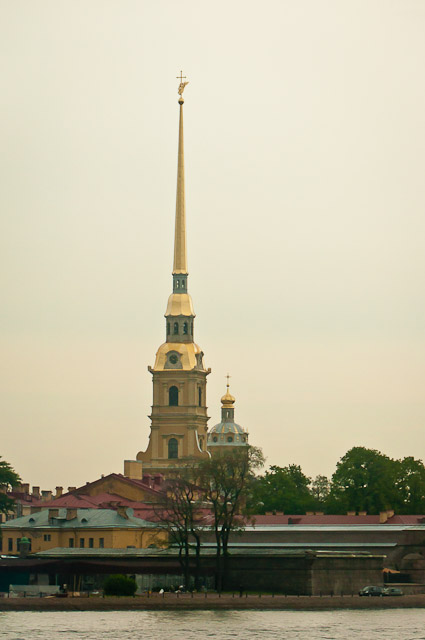 The Peter and Paul Fortress surrounds the Peter and Paul Cathedral
The Peter and Paul Fortress surrounds the Peter and Paul Cathedral
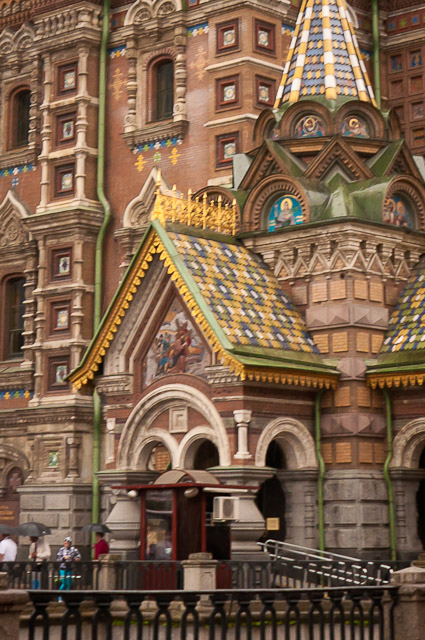 Cathedral of the Resurrection of Christ, also known as The Church of Our Savior
on the Spilled Blood
Cathedral of the Resurrection of Christ, also known as The Church of Our Savior
on the Spilled Blood
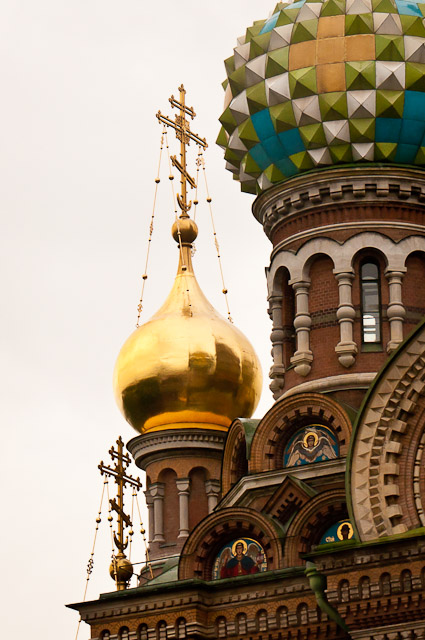 Cathedral of the Resurrection of Christ
Cathedral of the Resurrection of Christ
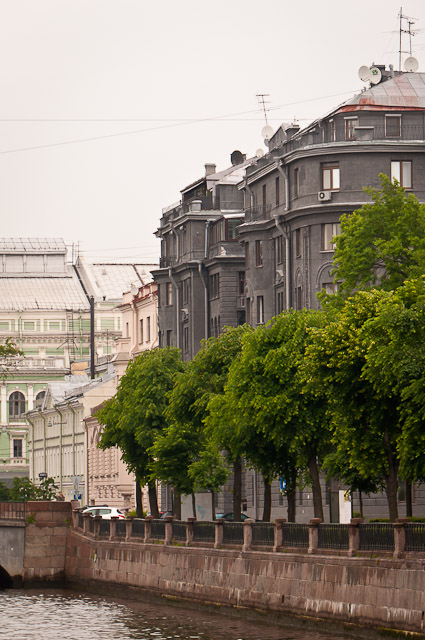 Buildings along the Neva River
Buildings along the Neva River
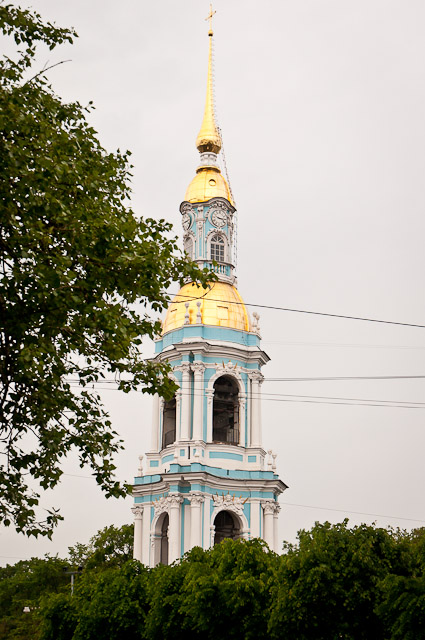
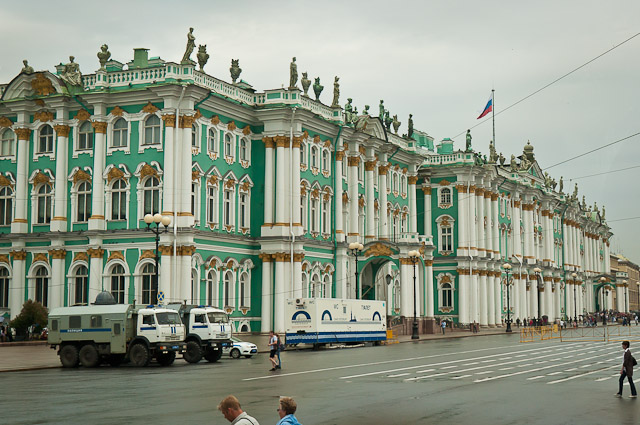 Hermitage or is it the Winter Palace? Whatever the case, the Hermitage is a part
of this complex of buildings.
Hermitage or is it the Winter Palace? Whatever the case, the Hermitage is a part
of this complex of buildings.
The Hermitage and Catherine the Great
Empress Catherine the Great – also known as Catherine II - ruled Russia from 1762 to 1796. During that time she collected a very large assortment of paintings and other works of art, primarily by purchasing, sight unseen, art collections from western European nobility. Together these purchases became the largest collection of artwork in the world. She built the Hermitage to house her acquisitions. Ok, that is an over-simplification, but you get the idea.
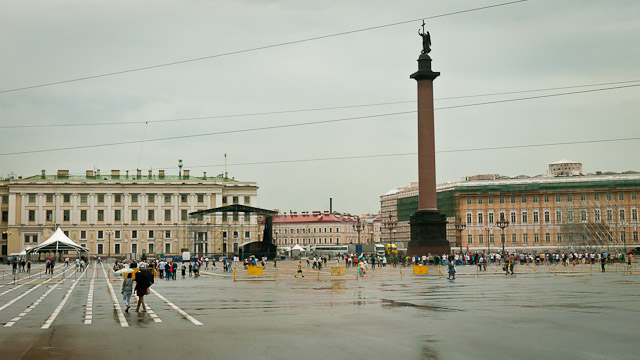 Alexander Column in the Palace Square
Alexander Column in the Palace Square
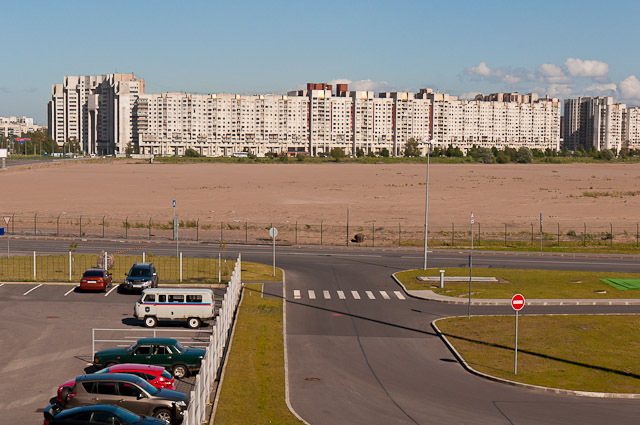 We passed this building the day before. Actually it seemed like, with a bit a maintenance,
it might not be all that bad a place to live. The apartments with a west view look
out over a canal, a very extensive sand bar, and the dock for foreign cruise ships.
We passed this building the day before. Actually it seemed like, with a bit a maintenance,
it might not be all that bad a place to live. The apartments with a west view look
out over a canal, a very extensive sand bar, and the dock for foreign cruise ships.
